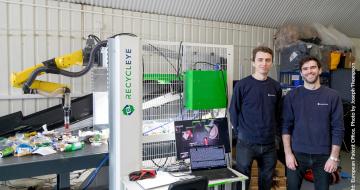Table of Contents
Biotechnology is one of the key sectors of the 21st century economy. Due to the significant investment required in biotechnological research, patent protection adapted to such inventions was considered necessary to encourage such investment and ultimately enhance the European Union's competitive position in this field. However, the legislator also took into account a number of fundamental oppositions relating to the patentability of plants, animals or people. The general conditions of patentability of course apply to biotechnological inventions: mere discoveries are, therefore, not patentable and the potential industrial application of an invention must always be demonstrated. Certain activities are also excluded from the scope of patentability because they are considered contrary to public order or moral standards - this is the case for cloning humans, using human embryos or changing the germ line genetic identity of a human or animal.
Inventions relating to an object composed of biological material or containing such material, or to a process by which biological material is obtained, may also be patented, if the conditions for patentability are met. The fact that the invention involves living matter does not constitute an obstacle, nor does the fact that the biological material (e.g. a genetic sequence or an enzyme) is pre-existing in nature. However, such biological material must have been isolated from its natural environment or obtained by a technical process. This also applies to parts of the human body.
For example, human insulin, which exists in the human body, could be patented if it could be produced by a new and more efficient means using genetically modified bacteria.
A number of inventions relating to biological material are, nevertheless, excluded from patentability:
Plant varieties
Plant varieties are excluded from patent protection because they have their own system of protection, through plant variety rights. However, plant inventions may be patented, if the technical feasibility is not limited to a particular variety of plants. For example, an inventive genetic manipulation that can be applied to different plant varieties may find better protection through a patent than through plant variety protection.
Animal breeds
An animal breed is not patentable as such. On the other hand, an invention relating to animals for which the technical feasibility is not limited to a specific breed may be the subject of a patent. Thereby, a mouse which was genetically modified for cancer research - the Onco-Mouse - was patented.
Essentially biological processes for the production of plants or animals
An example of these processes is the crossing or selection in the cultivation process. Plants or animals obtained exclusively by these processes are also excluded from patent protection.
These exclusions from the scope of patentability do not apply to
- microbiological processes, or
- other technical processes, or
- a product obtained by these processes.
Bacteria, yeasts, viruses or the processes by which they are obtained can, therefore, be patented if the conditions for patentability are met.
Inventions contrary to public order and moral standards
Certain inventions in the field of biotechnology have been explicitly declared unpatentable by the legislator:
- processes for cloning human beings, i.e. any process, including embryo splitting techniques, aimed at creating a human being with the same genetic information as another living or deceased human being;
- processes for modifying the germ line genetic identity of human beings;
- the use of human embryos for industrial or commercial purposes;
- processes for modifying the genetic identity of animals likely to cause them suffering without substantial medical benefit to humans or animals. Any animals obtained by such processes are also not patentable.
Find out more about the conditions for patentability.


